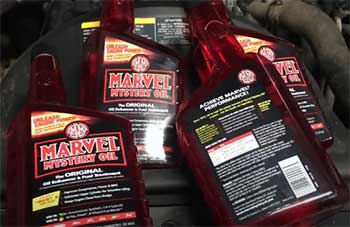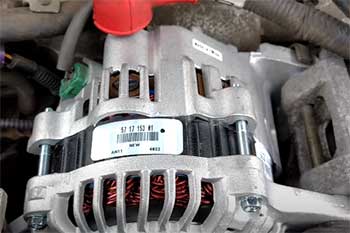If you’re shopping for a winter tire that doesn’t just survive the cold but actually thrives in it, let me point you straight to the Nexen Winguard Sport 2.
I’ve been using them myself and can confidently say—these tires offer the kind of grip, stability, and comfort you’d expect from premium brands, but at a much more accessible price point.
Whether you’re battling snowy roads, icy mornings, or slushy intersections, this tire delivers.
And if you want a winter tire that performs confidently in both snow and dry conditions, you should really give this one a shot.
My Real-World Experience with the Nexen Winguard Sport 2
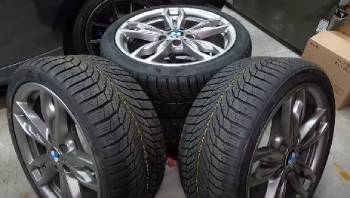
I live in an area that experiences all types of winter weather—icy roads, freezing rain, deep snow, and occasionally dry but bitterly cold days.
My daily driver is a Mini Cooper 2-door, not exactly known for having the best winter traction.
So naturally, I wanted a tire that could give me security on the road while still allowing for a bit of spirited driving when conditions allowed.
After reading a few reviews and doing my research, I went for the Nexen Winguard Sport 2.
They checked off a lot of boxes—Three-Peak Mountain Snowflake certified, directional tread pattern, lots of siping for grip, and a design that promised quiet, comfortable driving.
Mounting them was smooth, and right off the bat I noticed how aggressive the tread looked.
The zigzag grooves are deep, and the sidewall construction looks sturdy. What surprised me, though, was the on-road behavior.
In the snow, these tires feel composed. I’m not just saying they get me from point A to B—they actually allow for confident, controlled driving.
On snowy highways, the car stayed planted. I didn’t feel that “floaty” sensation you sometimes get with cheaper winter tires.
Now let’s talk dry performance, which I think gets overlooked in winter tire discussions. Because honestly, most winter days aren’t full of blizzards—they’re dry, cold days with the occasional patch of black ice.
The Nexen Winguard Sport 2 shines here. They don’t get squishy or sloppy like some other winter tires I’ve used in the past.
I’ve pushed these tires through turns, wet patches, and even tried to provoke some slip on purpose to test their limit.
I had to work really hard to get them to lose grip on cold pavement. For a tire that handles winter snow this well, it’s shocking how composed it feels in dry conditions too.
The only time I noticed any softness was late spring when I forgot to swap them out.
Once the temps rise and the asphalt heats up, you can feel them getting less precise. But that’s to be expected—these are winter tires, after all.
Overall, my experience with the Nexen Winguard Sport 2 has been nothing short of impressive.
They strike a rare balance between control, comfort, and confidence—and I didn’t have to empty my wallet to get it.
Maintenance Tips for Nexen Winguard Sport 2
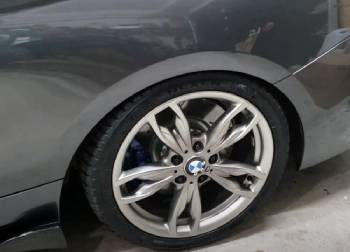
- Rotate Properly and Regularly: Because the Winguard Sport 2 is a directional tire, you need to rotate them front-to-back on the same side. Doing this every 5,000–6,000 miles keeps tread wear balanced and extends tire life.
- Check Pressure During Temperature Swings: Winter weather causes tire pressure to fluctuate. Low pressure not only increases wear but also reduces traction. Check your tire pressure weekly and keep it at the manufacturer’s recommended level.
- Swap Out Once Temperatures Stay Above 45°F: These are true winter tires. If you leave them on in spring or summer, the heat will degrade the rubber compound quickly. Make sure to change to all-season or summer tires as soon as winter’s over.
- Inspect for Damage After Rough Roads: Winter roads often hide potholes under snow. Check your tires after hitting a rough spot to make sure there’s no sidewall bulging or cracking.
- Store in a Cool, Dry Place: When you’re not using them, clean the tires, dry them thoroughly, and store them in a vertical position in a temperature-controlled environment. Use tire bags to prevent UV and ozone damage.
- Avoid Harsh Acceleration in Snow: While these tires have excellent grip, even the best winter tires can slip under hard throttle. Ease into acceleration, especially on inclines and icy intersections, to maintain traction.
- Keep Them Clean From Salt and Slush: Winter roads are coated with salt, sand, and chemicals. Regularly rinse your tires and wheels to prevent corrosion and preserve rubber flexibility.
- Monitor Tread Depth Seasonally: Even if the tire still looks good, worn tread can reduce winter grip. Use a tread depth gauge to check the center grooves. Replace when they’re nearing 4/32″ during the winter months.
- Use All Four for Best Results: Winter tires are most effective when installed on all four wheels. Mixing with all-seasons can compromise braking, cornering, and stability.
- Avoid Prolonged Highway Driving in Warm Weather: If a late-season heatwave hits, keep your speeds moderate. These tires can overheat and degrade quickly when used on hot pavement at high speeds.
Pros and Cons of Nexen Winguard Sport 2
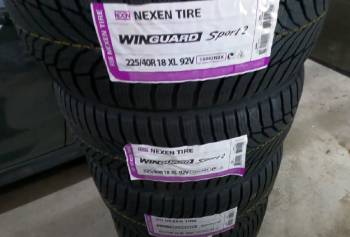
Pros:
- Excellent traction on snow and ice thanks to high-density multi-sipe and 3D winter kerf technology
- Surprisingly stable in dry cold weather, outperforming many winter tires in cornering and braking
- Directional tread design with zigzag grooves helps evacuate slush and prevent hydroplaning
- Comfortable ride with low road noise, thanks to dual pitch sequencing
- Shoulder block grooves improve cornering stability and side force grip, even on icy turns
- Comes with Nexen’s Total Coverage Warranty including 36 months of roadside assistance
- Three-Peak Mountain Snowflake certification ensures tested performance in severe winter conditions
- Handles wet and slushy roads with confidence—minimal slipping even at highway speeds
- Feels sporty for a winter tire, especially on smaller cars with responsive steering
- More affordable than premium competitors while delivering close-to-equal performance
Cons:
- Loses composure in warm weather; softens noticeably on hot asphalt and twisty roads
- Directional tread limits rotation options, which can slightly reduce overall lifespan
- Not the longest-lasting winter tire if used daily through long seasons
- Doesn’t offer stud compatibility—limiting extreme ice performance for some users
- Availability in some sizes may be limited during peak winter demand
- Rear traction can still be an issue on lightweight, rear-wheel-drive cars without added weight
- Lacks some of the prestige of better-known brands, which may concern brand-conscious buyers
- Not suitable for off-road winter driving; more designed for paved urban and suburban roads
- Needs to be swapped out promptly in spring to avoid accelerated wear
- May not match the extreme cold resistance of ultra-premium Arctic-specific models
Nexen Winguard Sport 2 Vs. Other Brands
- Nexen Winguard Sport 2 Vs. Continental VikingContact 7
The Continental VikingContact 7 is a top-tier studless winter tire, known for outstanding grip and quietness. When I tested a friend’s set, I noticed a marginally smoother ride, especially on dry pavement. But in snowy and icy conditions, the Winguard Sport 2 felt just as surefooted. The key difference comes down to price. You’ll pay a lot more for the Continental without a massive leap in performance. If you value ride refinement and have the budget, VikingContact 7 might win. But for value and capability, the Nexen comes out looking really strong.
- Nexen Winguard Sport 2 Vs. General Altimax Arctic 12
The Altimax Arctic 12 is another solid winter tire, and unlike the Nexen, it’s studdable. That gives it an edge on glare ice, especially in rural areas. However, the Arctic 12 sacrifices dry-road handling and ride comfort. It feels a bit more sluggish and noisy compared to the Sport 2. If you’re doing mostly city and highway driving in mixed winter conditions, I’d take the Nexen. It’s better balanced for modern winter driving needs.
- Nexen Winguard Sport 2 Vs. Michelin X-Ice Snow
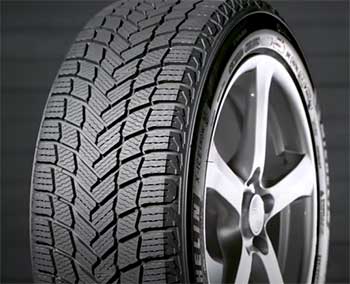
Michelin’s X-Ice Snow is legendary for winter reliability, low rolling resistance, and tread life. I’ll admit—it beats the Nexen in those departments.
But for nearly double the cost, the difference isn’t twice as good.
On typical snow-covered roads, the Nexen performs about 85–90% as well, and its dry handling is surprisingly close.
If you want the best-of-the-best and don’t mind the price, Michelin wins. But for smart, cost-conscious winter driving, the Nexen holds its own beautifully.
Also Read: Comparison Of Lionhart Vs. Lexani Tires
Frequently Asked Questions (FAQs)
Yes. It offers great performance in snow, ice, and dry winter conditions, with excellent ride comfort and stability at an affordable price.
Definitely. Nexen produces reliable, well-engineered tires that punch above their weight in both performance and value.
Nexen Tire Corporation is a South Korean company that manufactures tires globally, including in South Korea, China, and the Czech Republic.
Yes. Many Reddit users praise them for their grip, price-to-performance ratio, and reliability in real-world winter conditions.
Final Thoughts
If you need a reliable, well-balanced winter tire that performs impressively on snow, slush, ice, and even dry pavement, then yes—you should buy the Nexen Winguard Sport 2.
It’s affordable, confidence-inspiring, and delivers a surprisingly refined ride for the price.
I’ve driven these through harsh conditions and came out genuinely impressed.
Whether you’re upgrading from worn-out all-seasons or looking for something that doesn’t compromise handling during winter months, this tire makes a solid case.
You don’t have to spend a fortune to feel safe and in control on winter roads. Sometimes, the smart choice is also the budget-friendly one—and the Nexen Winguard Sport 2 is exactly that.
